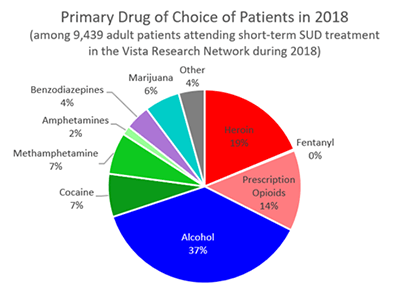
At the height of the opioid epidemic in 2018, one-third (33%) of the patients entering addiction treatment centers in the Vista Research Network said their primary drug of choice was an opioid. By 2020, this had dropped to 22% of patients. Last year, only 12% of the patients in Vista’s network were in treatment for opioid use disorder:

| 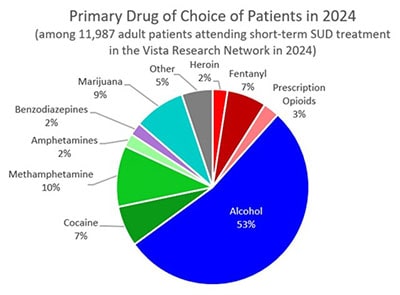
|
What has caused such a major shift? There are three primary reasons:
1. The number of people abusing opioids has decreased 40% in the last 8 years
The medical community started clamping down on the overprescribing of opioid pain relievers in the early 2010s. While this originally caused a large number of people who’d become addicted to opioids to turn to the streets, the number of people who reported using illicit opioids has been steadily declining since 2015:
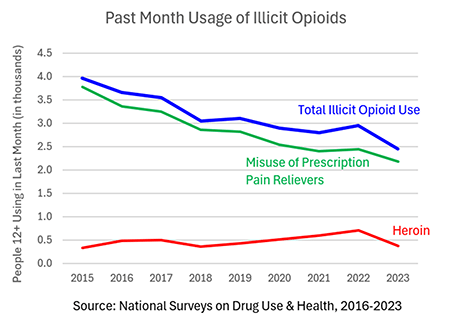
2. There are fewer opioid users with moderate to severe opioid addictions
Data from the last several years of the National Survey on Drug Use & Health (NSDUH) identifies some other fascinating trends. The number of heroin users with a severe addiction plummeted by one-third between 2021 and 2023:
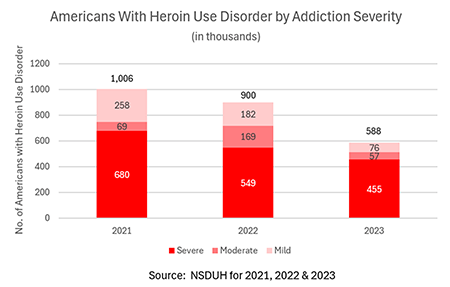
If we subtract the data on self-identified heroin users (which, in practical terms, means they’re injecting fentanyl) from those of all individuals with an opioid use disorder, most of the Americans that NSDUH has identified as having opioid use disorder have only mild symptoms:
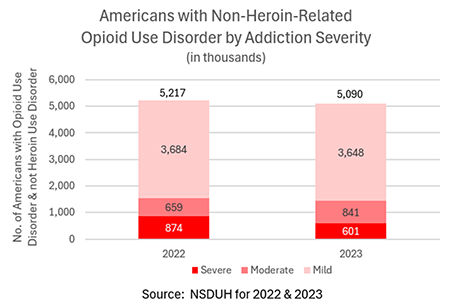
Since it is overwhelmingly individuals with severe addictions who enroll in addiction treatment programs (84% of patients who attend an SUD center in the Vista Research Network have a severe addiction; another 6% have a moderate addiction), it’s not surprising that the enrollment of individuals with opioid use disorder has declined so drastically.
3. More individuals with OUD are now receiving Medication-Assisted Treatment at MAT clinics
NSDUH data indicates that the number of individuals taking medications such as Suboxone or Methadone for OUD increased rapidly between 2019 and 2022. While many of these patients likely started medication at a traditional short-term addiction treatment center, a substantial portion of these probably received treatment at a MAT clinic instead.
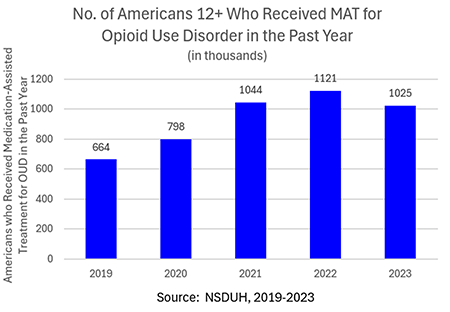
All three of these factors help explain the tremendous reduction in the number of patients entering short-term treatment programs for Opioid Use Disorder.
While not affecting the number of patients entering treatment, there’s a fourth major change that clinicians treating opioid use disorder should be aware of:
Smoking has replaced injecting as the primary way of using opioids
Vista’s data confirms that how opioids are taken has changed dramatically in recent years. As fentanyl replaced heroin on the streets and fake pills became ever more widely available, smoking has replaced injection as the primary mode of taking illicit opioids:
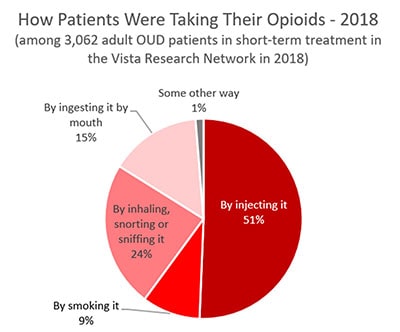
| 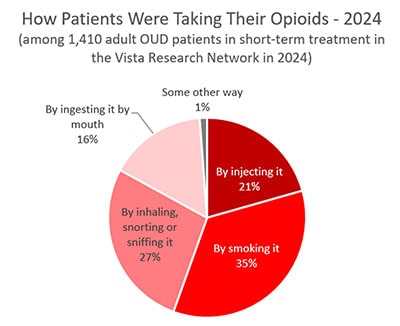
|
Smoking avoids the risk of bloodborne infections and abscesses associated with injecting opioids. However, opioids that are smoked are rapidly absorbed by the body and smokers have no way of monitoring how much opioid they’re breathing in. By late 2022, more fatal overdoses were caused by smoking opioids than by injecting them.



